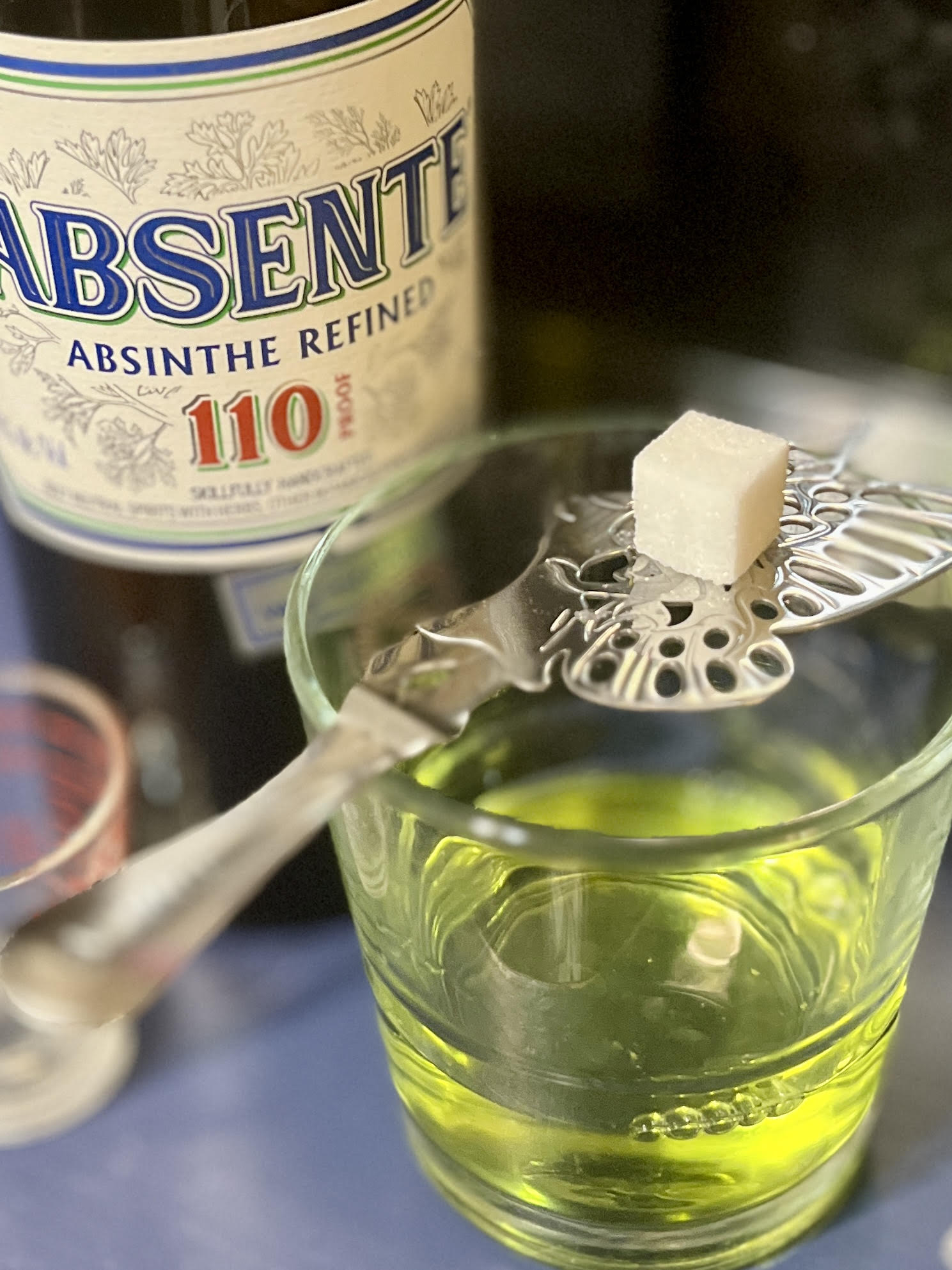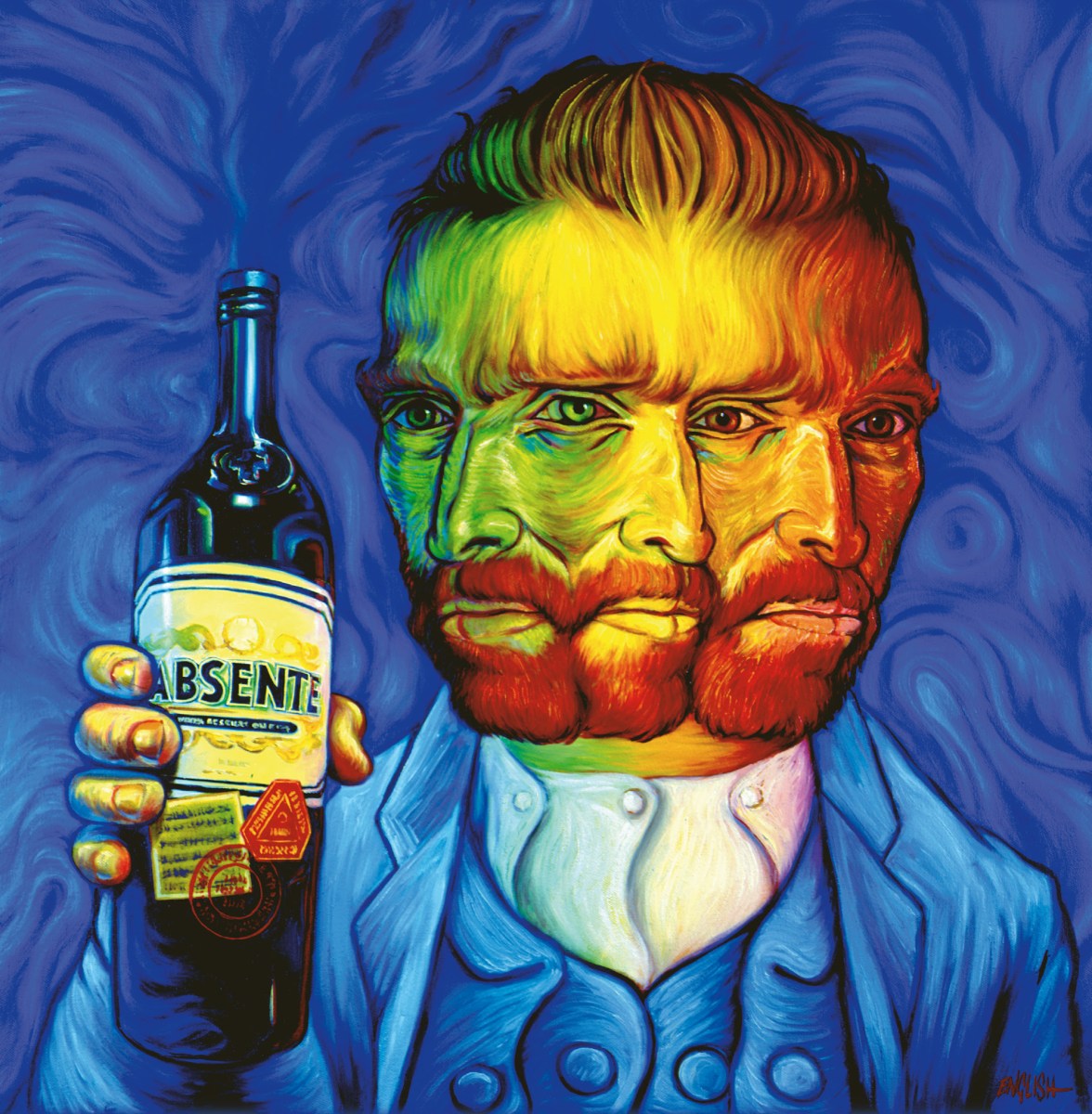Absinthe, often called “the green fairy,” is an emerald-hued spirit steeped in myth, history and allure. It has captured the imaginations of artists, writers and connoisseurs for centuries, becoming one of the most intriguing and controversial beverages in the world.

An historic elixir
Absinthe’s story begins in Switzerland in the late 18th century, when Dr. Pierre Ordinaire, a French physician, reportedly crafted a medicinal tonic combining wormwood, anise, fennel and other botanicals. By the early 19th century, Henri-Louis Pernod, a pioneering French distiller, industrialized production and his Pernod Fils distillery in Pontarlier, France, became synonymous with absinthe.
Pernod’s venture was rooted in the original absinthe recipe developed by Ordinaire and later refined by the Henriod sisters in Switzerland. Pernod acquired the formula and transformed it into a large-scale production business. His distillery produced absinthe using traditional ingredients, adhering to the artisanal methods that gave the drink its distinctive taste and allure.
Under Pernod’s leadership, absinthe grew from a medicinal tonic into a cultural phenomenon, symbolizing the Bohemian lifestyle. By the mid-19th century, his brand had become synonymous with the drink, widely consumed in France and eventually gaining fame worldwide.
Absinthe transcended social classes, enjoyed by everyone from aristocrats to laborers. Artists and writers, including Vincent van Gogh, Oscar Wilde and Ernest Hemingway, famously credited absinthe as a source of inspiration.
Van Gogh embraced absinthe during his time in 19th-century France. Its reputed ability to stimulate creativity resonated with van Gogh’s intense artistic drive. He consumed absinthe during prolific periods, such as his time in Arles, creating masterpieces like “The Starry Night.”
Some speculate that Absinthe’s effects influenced his swirling brushstrokes and vivid colors. However, its overuse, combined with van Gogh’s mental health struggles, may have contributed to his volatile behavior, including the infamous ear-cutting incident.
Wilde, the flamboyant playwright and poet, relished absinthe’s mystique, often drinking it in Parisian cafes. Wilde described absinthe as a spirit that unlocked the imagination, remarking, “After the first glass of absinthe, you see things as you wish they were. After the second, you see things as they are not.” His witty reflections cemented absinthe’s place as a drink of the avant-garde.
Ever the adventurer, Hemingway discovered absinthe in 1920s Paris. It inspired his cocktail, “Death in the Afternoon,” and appeared in his work, “For Whom the Bell Tolls.” For Hemingway, absinthe symbolized rebellion, artistic passion, and the pursuit of extraordinary experiences. Together, these icons ensured absinthe’s enduring cultural allure.
The ritual
Absinthe’s preparation is a ritual steeped in tradition and sensory delight. A proper serving begins with a slotted spoon holding a sugar cube placed over a glass containing a shot of absinthe. Cold water is dripped slowly over the sugar, dissolving it into the drink.
As the water mixes with the absinthe, the liquid transforms into a cloudy, opalescent green—a phenomenon called the “louche” effect. This method highlights the drink’s herbal complexities, creating an aromatic and visual spectacle that invites contemplation and enjoyment.
The myths and the ban
Despite its cultural significance, absinthe faced vilification in the late 19th and early 20th centuries. Critics blamed it for societal ills, from mental illness to violent crimes, fueled by fears surrounding thujone, a compound in wormwood mistakenly thought to cause hallucinations.
These misconceptions, combined with the growing temperance movement, led to absinthe bans in many countries. The United States prohibited it in 1912 and France followed in 1915.
For decades, absinthe’s allure lingered in shadows, its consumption relegated to whispers and underground gatherings. However, modern scientific research debunked the myths, revealing that absinthe contains only trace amounts of thujone—far too little to cause hallucinogenic effects.
A triumphant revival
The 21st century witnessed absinthe’s resurgence. Countries lifted bans, and distilleries revived traditional recipes while introducing modern twists. Absinthe reclaimed its place as a drink of sophistication and intrigue, celebrated for its complex flavors and storied history.
Absente, the brand: a modern emissary of tradition
From the heart of Provence, Absente (brand) embodies the legacy of this legendary spirit while adding contemporary elegance. Founded more than a century ago, the distillery embraces time-honored craftsmanship, blending traditional wormwood and anise with a secret array of botanicals.
This modern rendition offers a balanced flavor profile with a lower alcohol content, making it accessible to newcomers and connoisseurs alike. Peppermint adds a refined, smooth twist, making Absente ideal for classic rituals or innovative cocktails.
For those seeking a bold, authentic experience, Grand Absente pays homage to 19th-century recipes. With a robust blend of wormwood, anise and additional botanicals, it boasts an intense flavor and higher alcohol content, transporting drinkers to the heart of absinthe’s golden age.
Absinthe is more than a drink—it’s an experience, a journey through history and a celebration of creativity. Absinthe connects the modern to the mystical with every sip, proving that the green fairy’s magic endures.

































